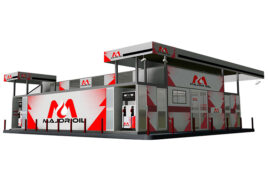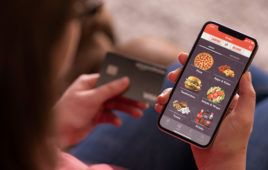Mobile technology is providing convenience store retailers with new opportunities at the POS.
Technological upgrades in point-of-sale (POS) systems are providing greater flexibility, control and intelligence than ever before. Businesses have moved from traditional cash registers and stationary credit-card readers to mobile- or cloud-based POS systems.
This proliferation of mobile phones—as well as tablets and smartwatches—gives retailers new opportunities to provide faster, more convenient customer service to time-crunched customers. While mobile payments have been slow to take off in the U.S., many convenience retailers, including 7-Eleven, Sheetz and Wawa, now accept mobile payments at the POS.
But it’s not just major chains adopting new payment technology. Busy Bee, the Madison, Fla.-based convenience store chain with 18 locations, implemented Apple Pay because it was available from the company’s POS provider. Now customers can use their phones to pay for purchases both inside the store and outside at the fuel pumps.
“We did it for the ease of convenience for our guests,” said Megan Forcey, director of advertising and e-commerce for Busy Bee. “We would love to be able to offer more [payment] options at some point.”
PAY TO PLAY
Currently, Apple Pay is the most widely accepted form of mobile payment in the U.S., according to the 20th annual “POS/Customer Engagement Survey,” which was released this year by BRP, a Boston-based retail-management consulting firm. However, there are a variety of mobile payment brands and apps in the market today, from Google Pay to PayPal to Visa Checkout, and many retailers such as Starbucks offer customers their own mobile payment options.
While customers like the convenience, there are many benefits for retailers that accept mobile payments.
“It enables customers to make purchases without their wallet—but with their ever-ubiquitous smartphone—and provides an additional level of security that isn’t available with credit cards, even EMV-enabled cards,” said David Naumann, vice president of marketing for BRP.
With mobile payments technology, the retailer never has nor retains the customer’s payment card information, reducing the security risk and retailer liability.
Look for mobile payments to become more accepted, but at a slower rate than projected in prior surveys, according to BRP. The impetus behind that growth will be retailers upgrading existing POS hardware and software. Plus, it will be important for chains to remain competitive as convenient mobile payment becomes more commonplace.
“For a guest, being able to use the phone that is already in their hand and pay with the press of the button is a convenience that may cut a minute or two off of their retail experience,” Forcey said.
New POS programs are rolling out to the U.S. market regularly—almost all are designed to make life more functional for businesses. One example is Square, which allows businesses to transform iPads and smartphones into a POS system using their Square readers. A component piece, Square Register, allows the user to track sales in real time, manage inventory, build a customer directory and have “customers pay intuitively.”




